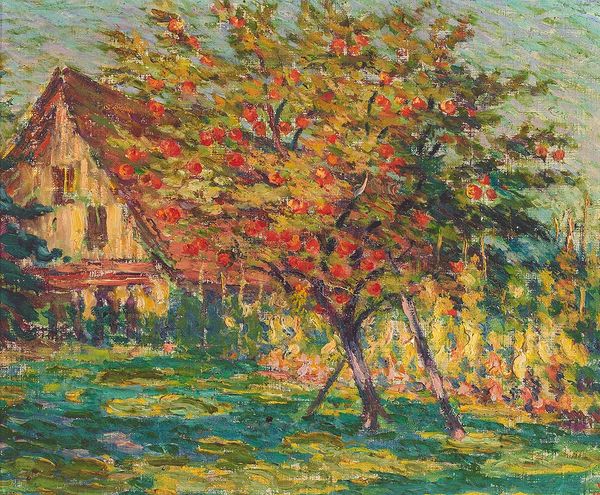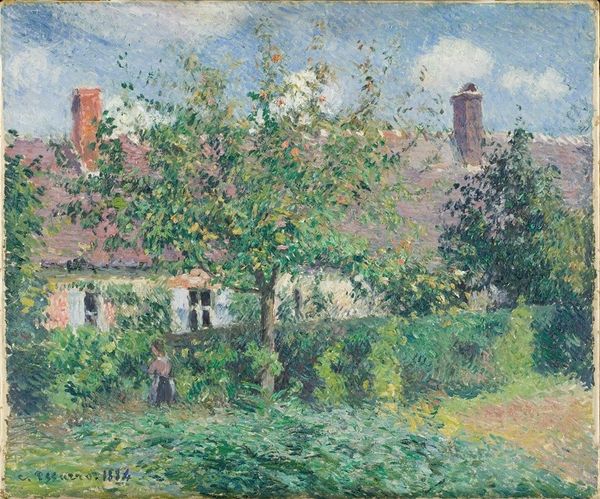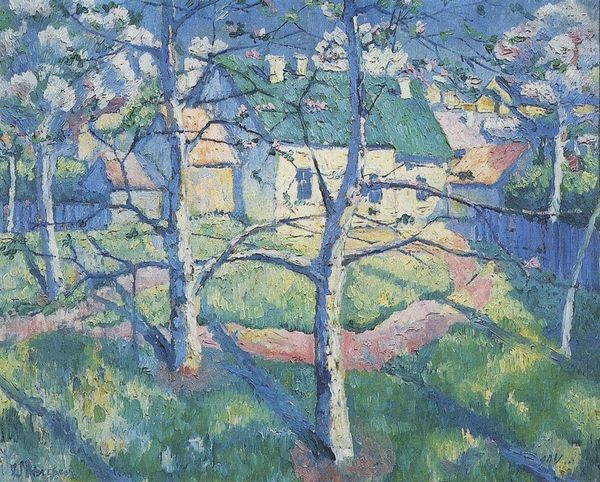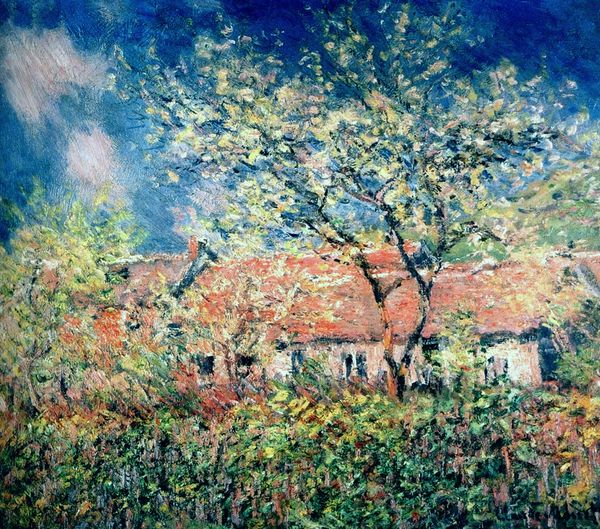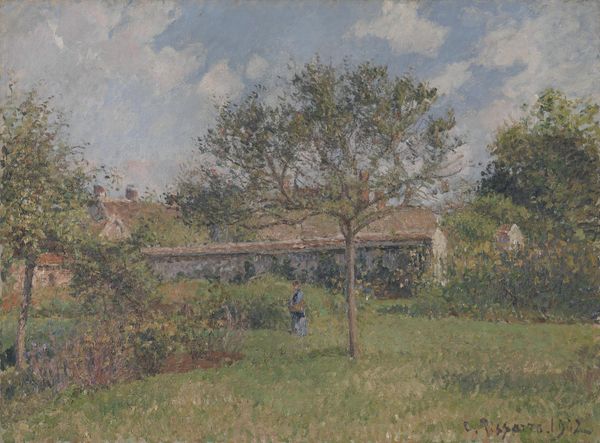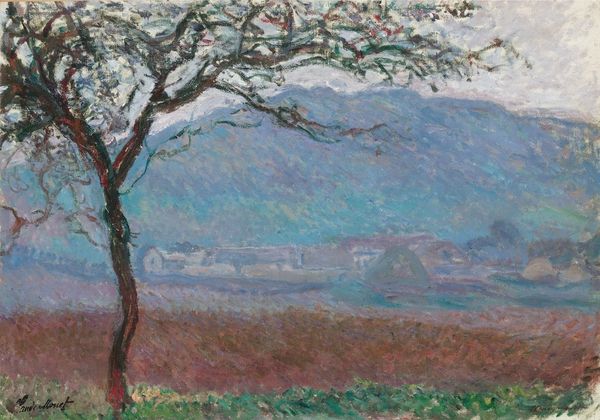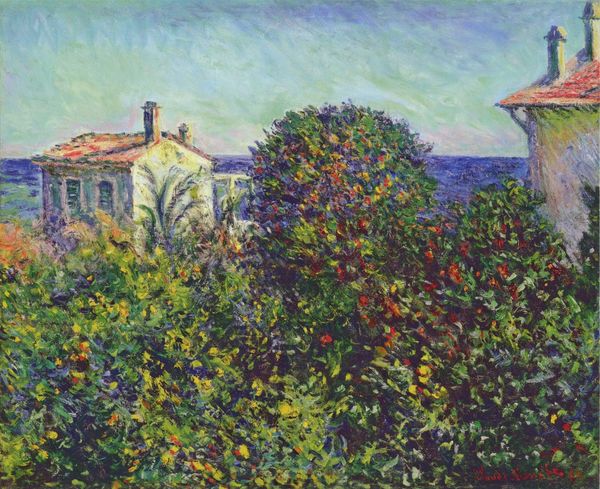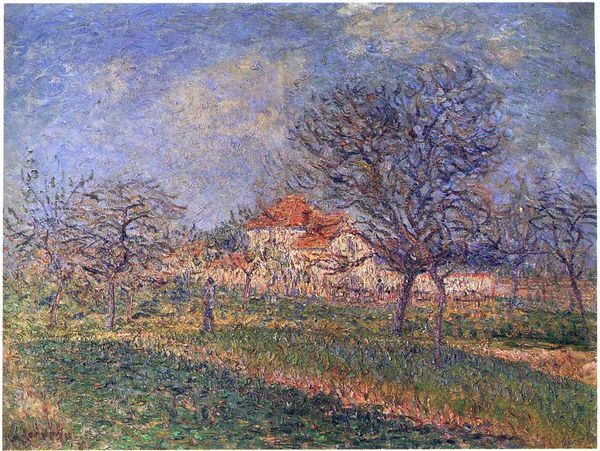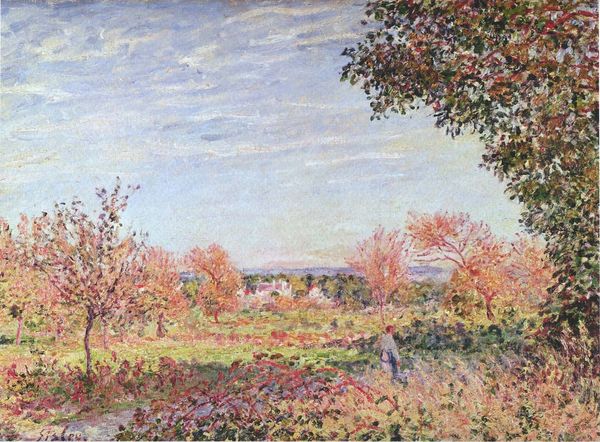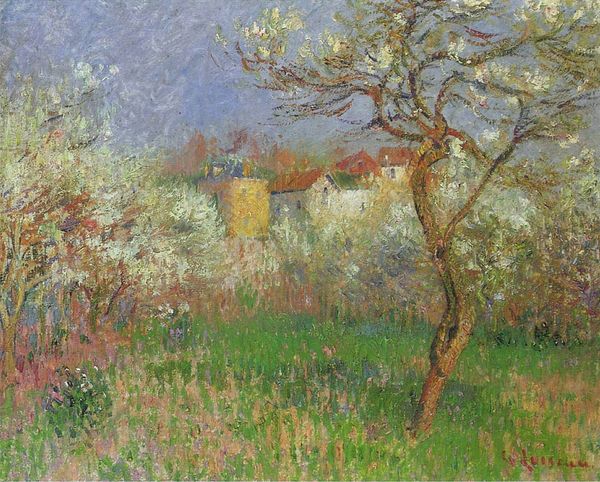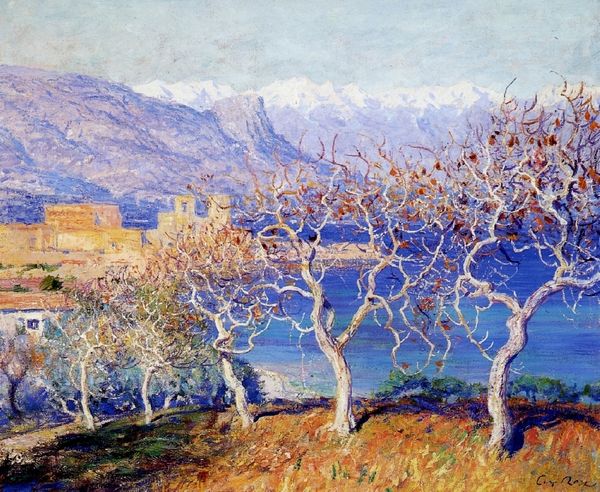
Copyright: Public Domain: Artvee
Here, Claude Monet captures the Gardener’s House at Antibes with oil on canvas. Monet, working in the late 19th and early 20th centuries, lived in a France where industrialization was rapidly changing the landscape. Monet’s impressionistic style, with its emphasis on light and fleeting moments, can be seen as a reaction to these changes, an attempt to capture the ephemeral beauty of the natural world before it disappeared. In this landscape we see the house as a humble dwelling, embraced by nature. Monet was part of a rising middle class, and landscapes such as this offered respite from the increasing urbanization and the rigidity of academic painting. His focus was on the sensory experience, the play of light and color, and in this way, Monet democratized art, turning his attention to ordinary scenes and inviting viewers to find beauty in the everyday. "I perhaps owe having become a painter to flowers," Monet once said. In this painting, Monet elevates a simple garden scene to a moment of quiet contemplation. There is an emotional honesty that connects us to the scene. The house, the garden, and the distant view come together in a harmonious vision, reminding us of the simple beauty of life.
Comments
No comments
Be the first to comment and join the conversation on the ultimate creative platform.
